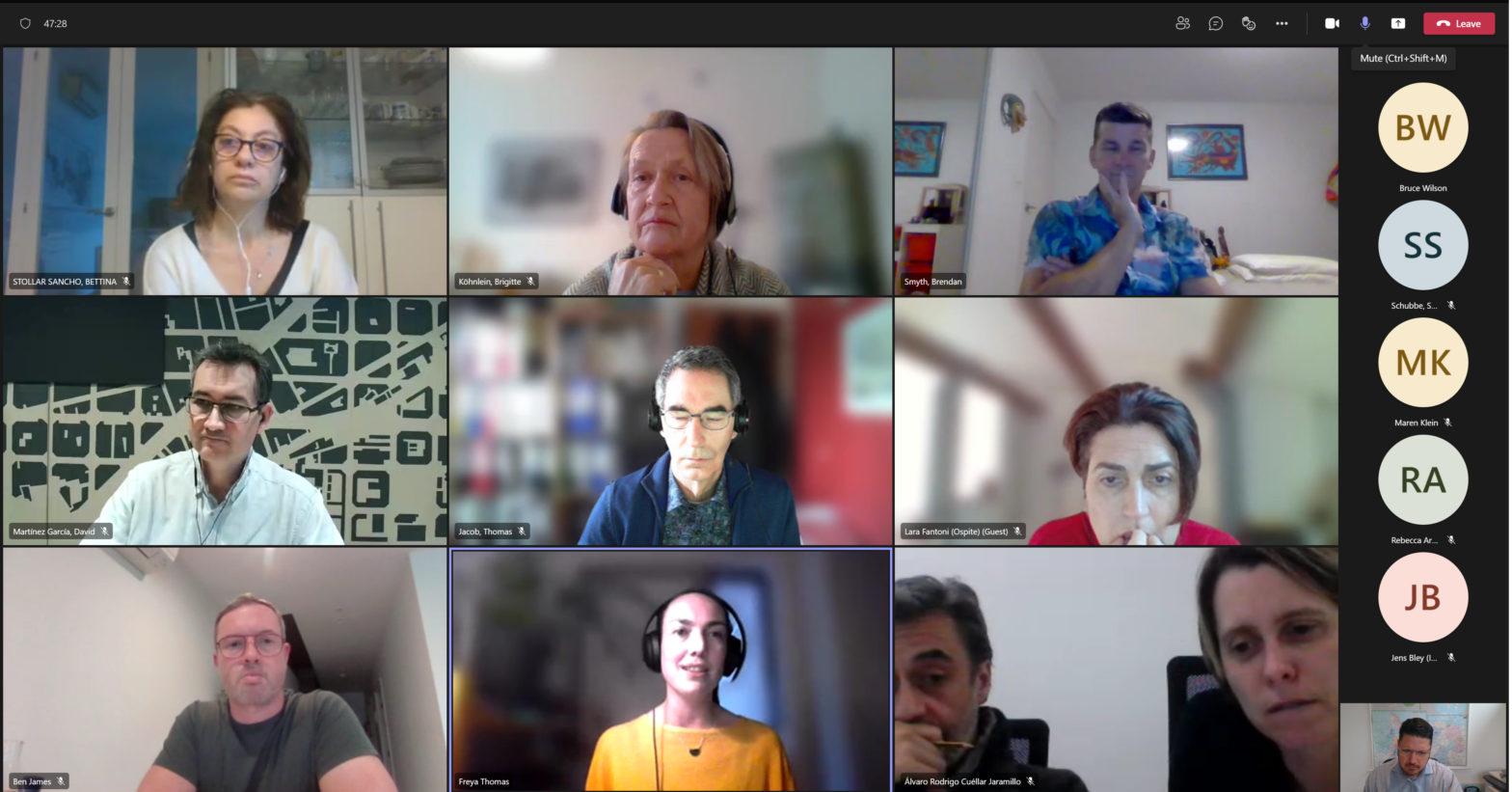In order to identify a potential topic for cooperation within the IURC programme, the cities of Barcelona, Florence, Hamburg, Brisbane, Canberra and Melbourne held a thematic meeting on 2 February 2022 to discuss their green urban planning strategies and projects. This marked the first of a series of theme-based discussions. The next one will be on innovation precincts.
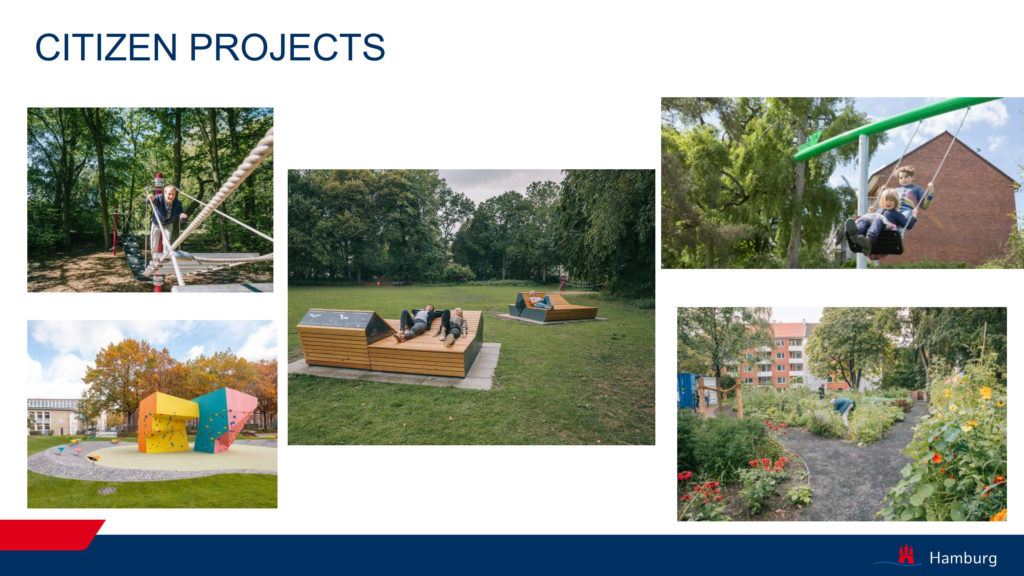
Hamburg’s presentation focused on initiatives to expand green infrastructure across the city while engaging civil society stakeholders in the process through targeted communication and inviting patronage and citizen projects. The city also put emphasis on digitisation to ensure more effective data usage and adopt the use of virtual reality in urban planning. One example from Hamburg is the Hamburg Solar Atlas, which is an online repository of data on building in the city that allows any user, public or institutional, to investigate whether a building is suitable for use of solar energy. The city would like to extend this type of data usage across other urban planning areas such as mobility.
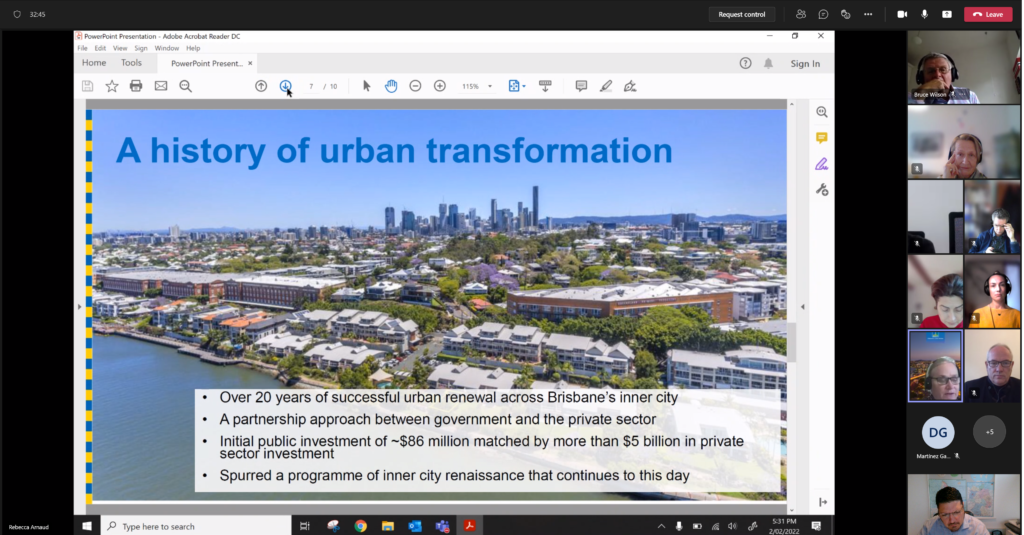
Brisbane’s presentation set out its urban transformation plans, looking at the impact of major, internationally focused events such as the 2032 Olympics and the 1982 Commonwealth Games as drivers for urban planning and expansion of green spaces. The city also discussed the impact and opportunity of changes in the city’s industrial context, such as the relocation of the port due to the size of ships. The Brisbane ‘City Renaissance’ also included engaging the community through initiatives such as the ‘Ideas Fiesta’, a very successful engagement initiative in 2013.
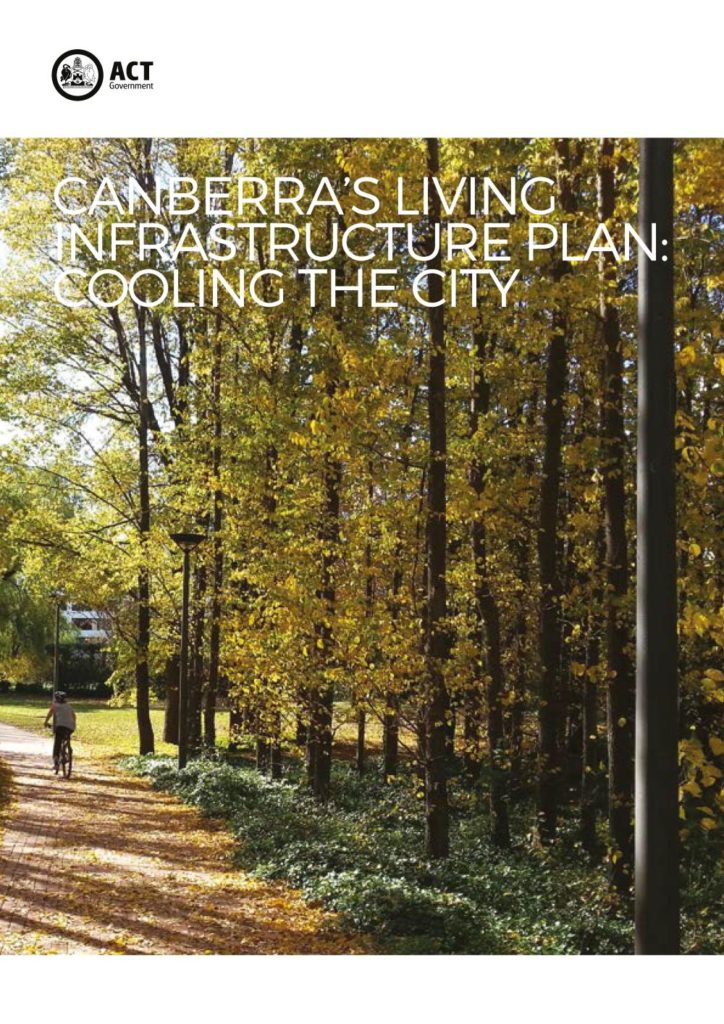
Canberra’s presentation introduced its Living Infrastructure Plan (Canberras-Living-Infrastructure-Plan) and Urban Forest Strategy 2020-2025 (Urban_Forest_Strategy). The Living Infrastructure Plan addresses the needs of an expanding and densifying city to become more resilient to climate change by proactively sustaining existing natural assets. It identifies options and opportunities via living infrastructure measures to enable the city to maintain and enhance climate resilience, the amenities of nature, economic prosperity and overall health and wellbeing. Meanwhile, the Urban Forest Strategy sets out the city’s objectives of protecting Canberra’s urban forest by ensuring its resilience, balancing, diversifying and supporting biodiversity via an ecological approach, and developing necessary infrastructure. These objectives are to be achieved in partnership with the community.
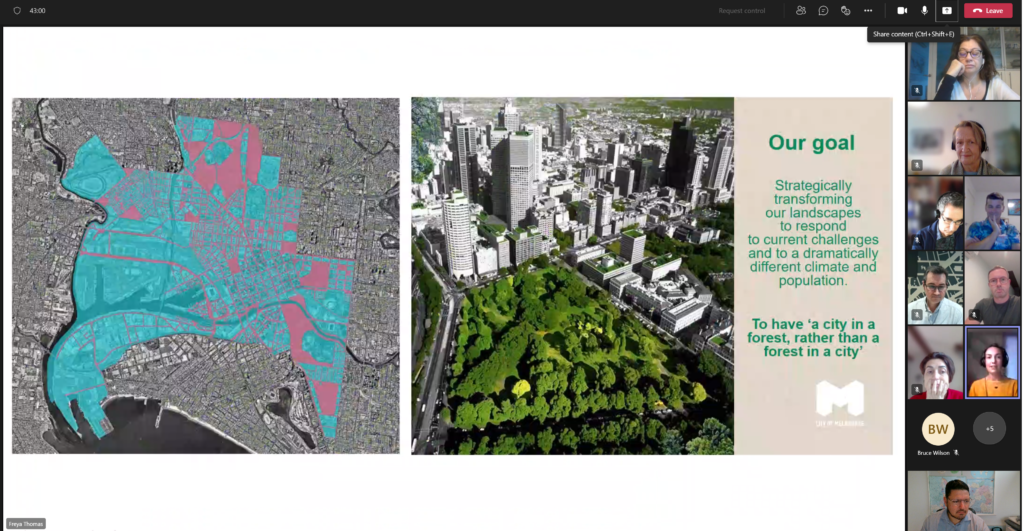
Melbourne presented its citywide greening strategy, which is based on an open data framework that enables public engagement via an online platform. Green infrastructure is vital to liveability and adaptation to climate change in a city with a steadily growing population leading to increasingly built-up urban space.
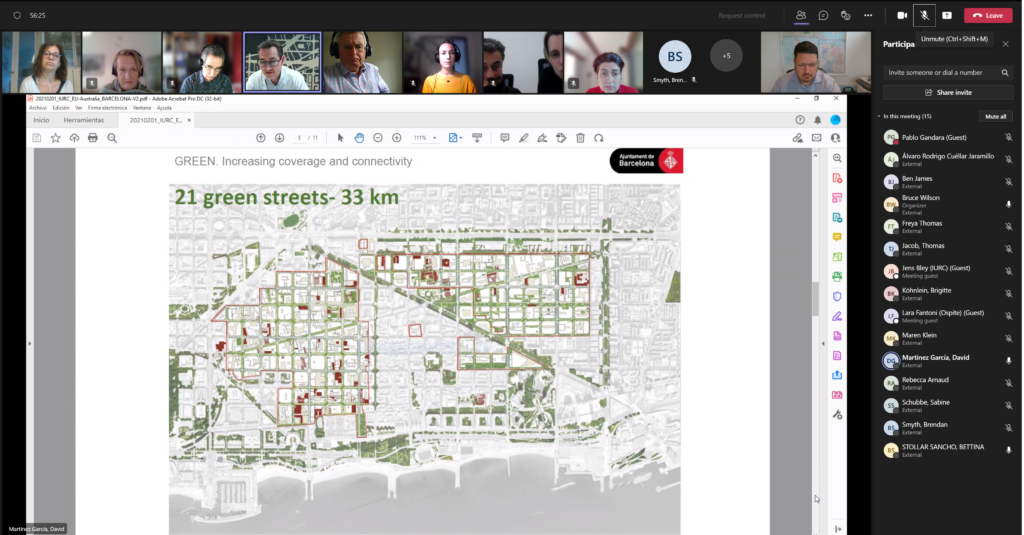
Barcelona is a densely populated city with only approximately 11% green space. Its general approach to sustainable urban development is based on tackling the climate, housing and social emergencies. Through implementing the superblock and the green deal strategies, the city deals with technology, knowledge, governance, and environment. Three pilot areas – Besós for urban renewal, Marina for new neighbourhood development and 22@ innovation district – were introduced. Barcelona is keen on sharing ideas and learning how to unlock the opportunities for neighbourhoods.
As for Florence, urban planning, public spaces and green infrastructure are so far not at the core of its IURC thematic priorities. Its interest lies in mobility and tourism and culture. However, the city offered to involve experts from these areas in case concrete projects could be identified.
